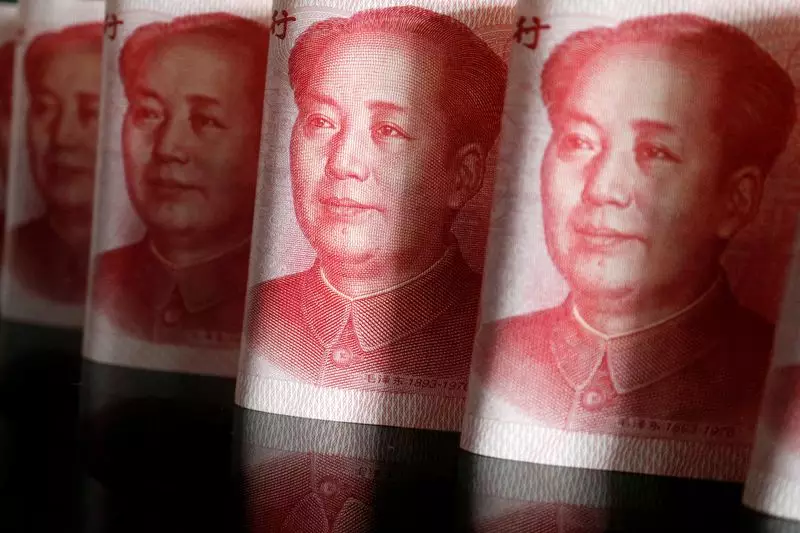China, the world’s second-largest economy, finds itself navigating uncertain waters as it endeavors to reinvigorate economic growth amidst persistent deflationary pressures and a sluggish post-pandemic recovery. Recent reports indicate that the Chinese government is poised to issue approximately 2 trillion yuan (about $284.43 billion) in special sovereign bonds this year as part of a broader fiscal stimulus initiative. This strategic financial maneuver aims not only to bolster consumer spending but also to alleviate some of the mounting debt burdens that local governments face.
The foundation of this initiative stems from China’s current economic challenges, which are characterized by a rocky recovery from COVID-19, faltering household consumption, and an alarming decline in real estate prices. With household spending hovering at less than 40% of the nation’s GDP—significantly below the global average—there is an urgent need for policies that can galvanize consumer confidence and expenditure. The Ministry of Finance (MOF) forecasts that by issuing 1 trillion yuan specifically earmarked for stimulating consumer demand, it aims to counterbalance these worrying trends. The funds are intended to provide direct support to households, which may include monthly child allowances for families with multiple children, thereby indirectly promoting consumer purchasing power.
In addition to planning direct consumer incentives, the Chinese government also seeks to bolster local governmental capabilities to manage their substantial debts, which have burgeoned to approximately $13 trillion. The issuance of an additional 1 trillion yuan in bonds is seen as a lifeline for these local authorities, allowing them to address financial shortfalls and invest in vital infrastructure projects that can bolster long-term economic growth. However, it is imperative to scrutinize the effectiveness of this approach; lavish spending without prudent oversight can inadvertently exacerbate debt woes rather than mitigate them.
The recent measures come amidst stark deflationary signals that suggest an economy struggling to maintain momentum. With consumer prices stagnating or declining, the risks of a deflationary spiral loom large, presenting a critical challenge for policymakers. The Politburo’s recent meeting underscored a collective commitment to achieving a growth target of approximately 5% for 2024, coupled with an emphasis on stabilizing the housing market. To this end, authorities are considering enhanced fiscal and monetary stimulus tools to restore confidence among both consumers and investors.
The central bank’s recent decision to implement aggressive monetary measures—including liquidity injections and reduced borrowing costs—reflects the urgency of restoring economic vitality. However, while these monetary policies have shown promise in uplifting market sentiment, their effectiveness could be significantly amplified through complementary fiscal actions that directly target household consumption and business investment.
As policymakers strategize on the implementation of these fiscal measures, it is vital to adopt a holistic approach that encompasses not only immediate financial relief but also sustainable economic practices. Analysts predict that in addition to bolstering household consumption, there may be a pronounced emphasis on providing targeted assistance to small and medium-sized enterprises (SMEs). Initiatives such as employment subsidies and tax relief for SMEs can play a crucial role in reducing operational costs, thus encouraging hiring and investment.
The commitment to restore vitality in the domestic economy should also include efforts towards social welfare enhancement, which may alleviate deeper socioeconomic issues. By promoting inclusive growth and ensuring that the benefits of fiscal stimulus reach vulnerable segments of the population, the government can reinforce consumer confidence and stimulate economic activity from the grassroots level.
While the move towards issuing 2 trillion yuan in special sovereign bonds signals a proactive approach by the Chinese government in reviving its economy, the efficacy of these measures will heavily depend on their execution and integration into a broader economic strategy. The present situation calls for not just immediate financial interventions but a paradigm shift towards sustainable economic policies that will foster resilience against future shocks. As China stands at this economic crossroads, the decisions made now will have lasting implications for its economic landscape and global standing in the years to come.
By keeping a vigilant eye on market dynamics and remaining flexible in policy responses, China can navigate these complex economic challenges while laying the groundwork for a more robust and resilient future.

